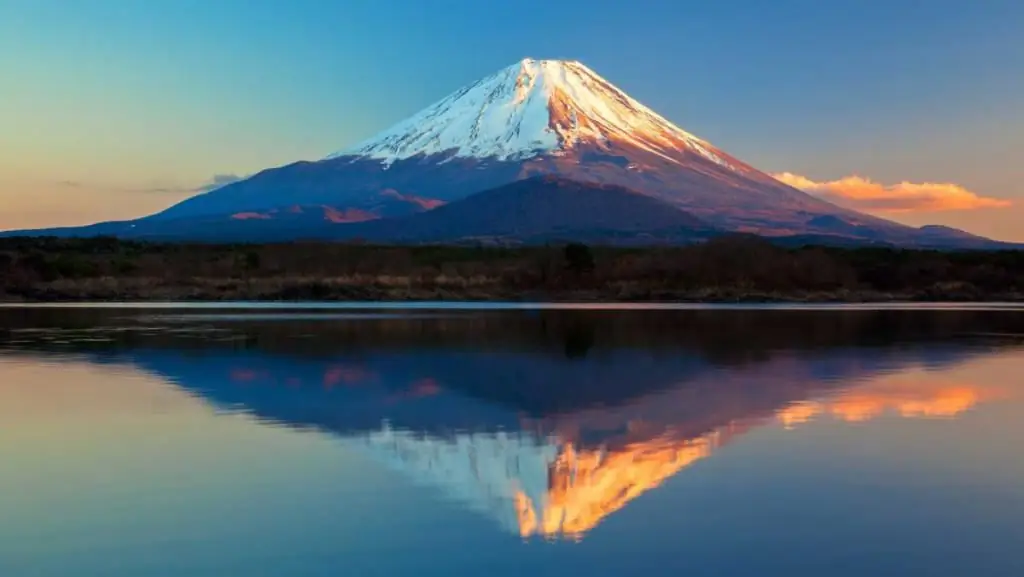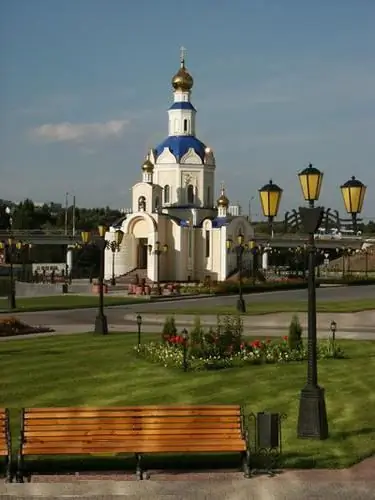- Author Harold Hamphrey [email protected].
- Public 2023-12-17 10:06.
- Last modified 2025-01-24 11:10.
Pushkin is the closest suburb of St. Petersburg, referred to in many works of art and official documents as Tsarskoye Selo (renamed in 1937). Once upon a time, members of the royal family and even personally ruling monarchs, as well as their entourage and just noble and we althy people, built summer residences here. Many parks and palaces have survived to this day. The sights of Pushkin annually attract a large number of tourists. What exactly is worth seeing in this city in the first place?
Catherine Park and Palace

The Tsarskoe Selo Museum-Reserve is included in the list of UNESCO World Heritage Sites. The real pearl of the complex is the Great Catherine Palace and the adjacent green area. The construction of the residence began in 1717; it was supposed to be a gift for the wife of Peter I, Ekaterina Alekseevna. The palace took on its modern appearance after restructuring under the guidance of the famous architect F. B. Rastrelli. Empress Elizaveta Petrovna became the mistress of the renovated residence. ATIn the future, the palace remained loved by all subsequent generations of the royal family. Pushkin (Leningrad region) has a variety of attractions. But it is the Catherine Palace that is the most luxurious and interesting of them. Today, you can see restored interiors here, including the famous Amber Room, as well as authentic personal items and household items of royal people. Around the palace there is a park with a total area of more than 100 hectares. On its territory you can see graceful sculptures, pavilions and other buildings. Here are Pushkin's attractions such as the Admir alty, the Hermitage, the Pyramid, the Cold Bath, the Marble Bridge, the Upper and Lower Baths, the Grotto.
Alexander Park

To this day, the residence built for Alexander I has survived in Pushkin. The Alexander Park borders on the Catherine Park from the north. The total area of the green zone is about 200 hectares. In the list of “The most interesting sights of Pushkin”, the Alexander Palace takes an honorable second place. This is a majestic building, designed in a classical style, with a colonnade of the Corinthian order and two symmetrical outbuildings. Date of construction - 1792-1796, the chief architect of the project - D. Quarenghi. Today, the interior of the palace is available for inspection by tourists. There is a large lake on the territory of the park, as well as interesting objects: Chinese Village, White Tower, Arsenal.
Sights associated with the name of A. S. Pushkin

Until 1937, the city was called Tsarskoe Selo (from 1918 to 1937 - Children's Village). And on the centennial anniversary of the death of the great poet, he was renamed Pushkin (February 10, 1937). There is a memorial museum-cottage of A. S. Pushkin. The exposition is located in the one-story house of A. K. Kitaeva, the widow of the court valet. Here Pushkin spent the whole summer with his wife Natalia Nikolaevna in 1813. Tourists interested in the life and work of the Sun of Russian Poetry can visit the Memorial Lyceum Museum. In the educational institution founded by Alexander I, A. S. Pushkin spent 6 whole years. Other Pushkin attractions associated with the poet who gave the city its name: the Historical and Literary Museum and the monument to Alexander Sergeevich.
Babolovsky park and palace

Pushkin is a city of parks and palaces. Adjacent to the Catherine Palace and Park Ensemble is another, once luxurious Babolovsky Garden, which once housed the original Gothic palace built for G. A. Potemkin. Today, only ruins remain from the luxurious residence of the Most Serene Prince of Tauride. But even in this form, the palace deserves attention. In its central hall, the Tsar Bath was installed - a huge bath carved from a single granite monolith. It is said that this thicket has been perfectly preserved to this day. The Tsar Bath is unique in its size and method of manufacture; only the city of Pushkin can be proud of such a rarity. The sights of Babolovsky Park are also some of the buildings miraculously preserved on its territory. The very same territory of the green zone today looks neglected and resembles a mixed forest.
Other sights of the city
If you come to Pushkin for a few days, you will probably want to see something else, besides the most important, iconic sights. Visit the "Tsarskoye Selo Collection" - an art museum, the House-Museum of P. P. Chistyakov. Not so long ago, an exposition dedicated to Anna Akhmatova appeared in the city. The city of Pushkin (St. Petersburg) has not only cultural and secular attractions. There is also an old church, today restored and functioning. This is the temple of the Icon of the Mother of God "The Sign", founded in 1734 and originally consecrated in 1747.
City of Pushkino (Moscow region)

In honor of Alexander Sergeevich Pushkin, many geographical objects and settlements were named in our country. And the number of streets and driveways named after the great poet simply cannot be counted. Probably, they are in all cities. In the Moscow region there is also a settlement with a similar name - Pushkino. This is a small and cozy green city. Interestingly, here, as well as in St. Petersburg's Pushkin, tourists regularly come. The sights of Pushkino, Moscow Region are mainly summer cottages of famous writers. Tyutchev, Mayakovsky, Stanislavsky, Demyan Bedny rested and worked here. Many estates today have been restored and taketourists as house-museums. Of interest is also the local history museum, sculptures by Krylov, Pushkin and Mayakovsky, as well as the Memorial to the soldiers who died during the Second World War.






